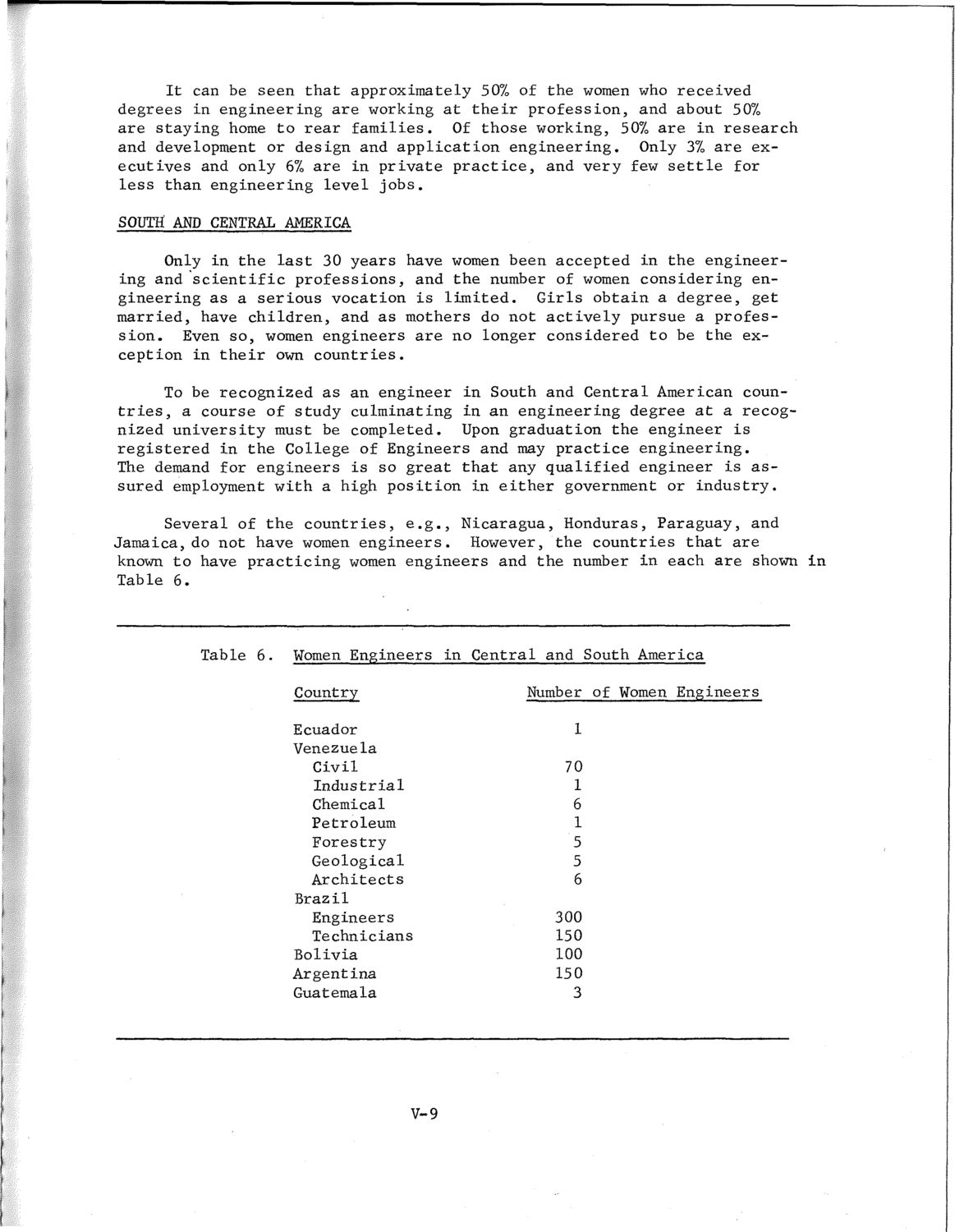| |
| |
Caption: SWE - Proceedings of the First International Conference of Women Engineers and Scientists
This is a reduced-resolution page image for fast online browsing.

EXTRACTED TEXT FROM PAGE:
It can be seen that approximately 507. of the women who received degrees in engineering are working at their profession, and about 507, are staying home to rear families. Of those working, 507, are in research and development or design and application engineering. Only 3 ° are ex7 ecutives and only 67, are in private practice, and very few settle for less than engineering level jobs. SOUTH AND CENTRAL AMERICA Only in the last 30 years have women been accepted in the engineering and scientific professions, and the number of women considering engineering as a serious vocation is limited. Girls obtain a degree, get married, have children, and as mothers do not actively pursue a profession. Even so, women engineers are no longer considered to be the exception in their own countries. To be recognized as an engineer in South and Central American countries, a course of study culminating in an engineering degree at a recognized university must be completed. Upon graduation the engineer is registered in the College of Engineers and may practice engineering. The demand for engineers is so great that any qualified engineer is assured employment with a high position in either government or industry. Several of the countries, e.g., Nicaragua, Honduras, Paraguay, and Jamaica, do not have women engineers. However, the countries that are known to have practicing women engineers and the number in each are shown in Table 6. Table 6. Women Engineers in Central and South America Country Ecuador Venezuela Civil Industrial Chemical Petroleum Forestry Geological Architects Brazil Engineers Technicians Bolivia Argentina Guatemala Number of Women Engineers 1 70 1 6 1 5 5 6 300 150 100 150 3 V-9
| |